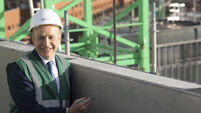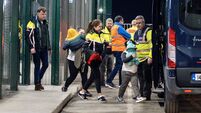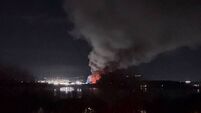Detectorists unearthing treasures which should be left alone

Matthew Seaver, National Museum of Ireland assistant keeper at the Irish Antiquities Division, recording the disturbed ground at Kilcrea Friary, Ovens, Cork. Picture: Jim Coughlan
It has been a popular hobby in the UK for decades but has seen a resurgence in recent years, fuelled in part by the success of TV shows like , a comedy starring Mackenzie Crook and Toby Jones as two eccentric metal detectorists who spend their days sweeping fields in the hope their alarms go off when they find treasure.
While it has led to the discovery of some of the most incredible and valuable hoards in that jurisdiction, including the vast Staffordshire hoard of Anglo-Saxon gold and silver in 2009, later bought from the finder jointly by a museum and gallery for £3.285m, the rise of the hobby here has caused nothing but alarm in the archaeological community.













